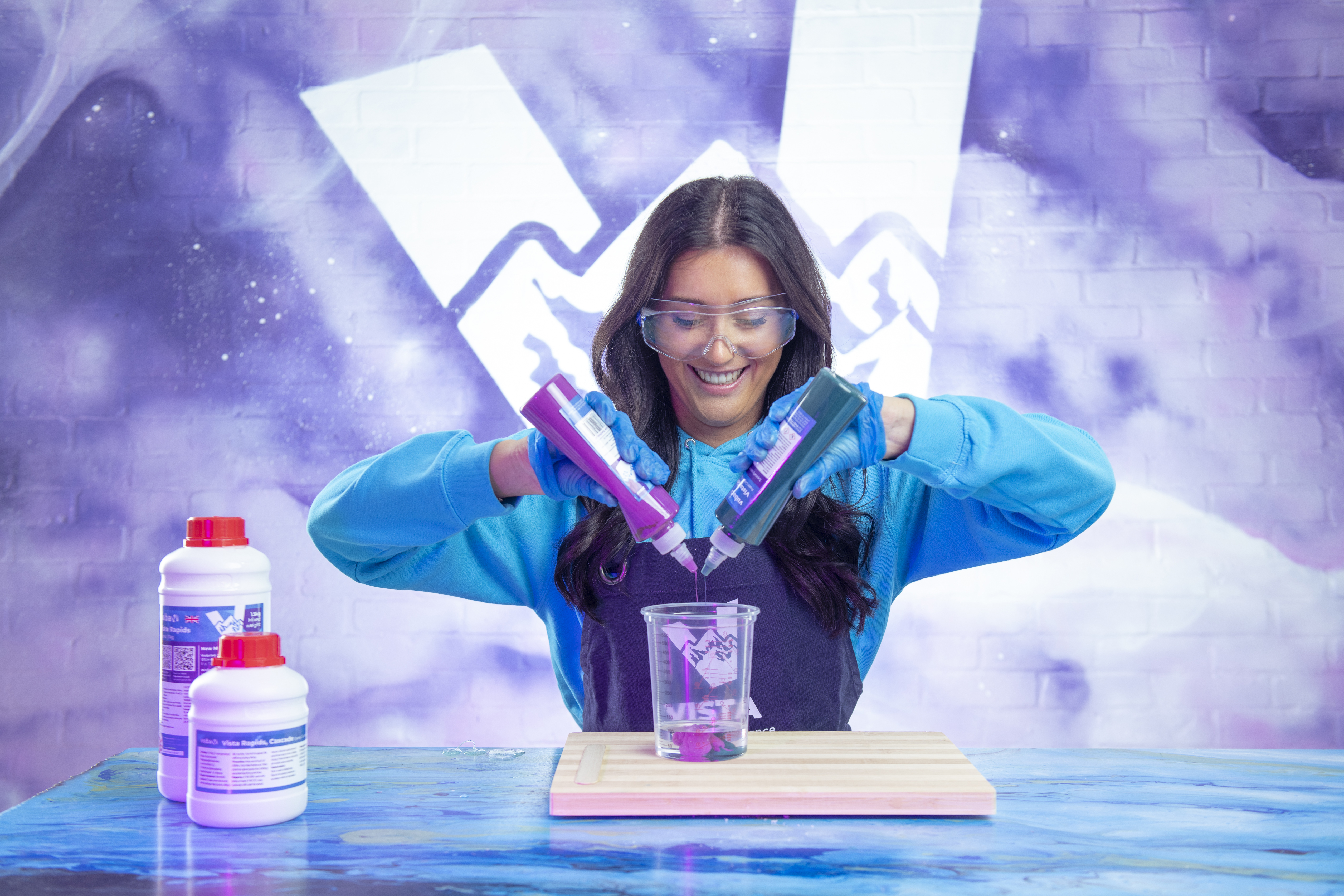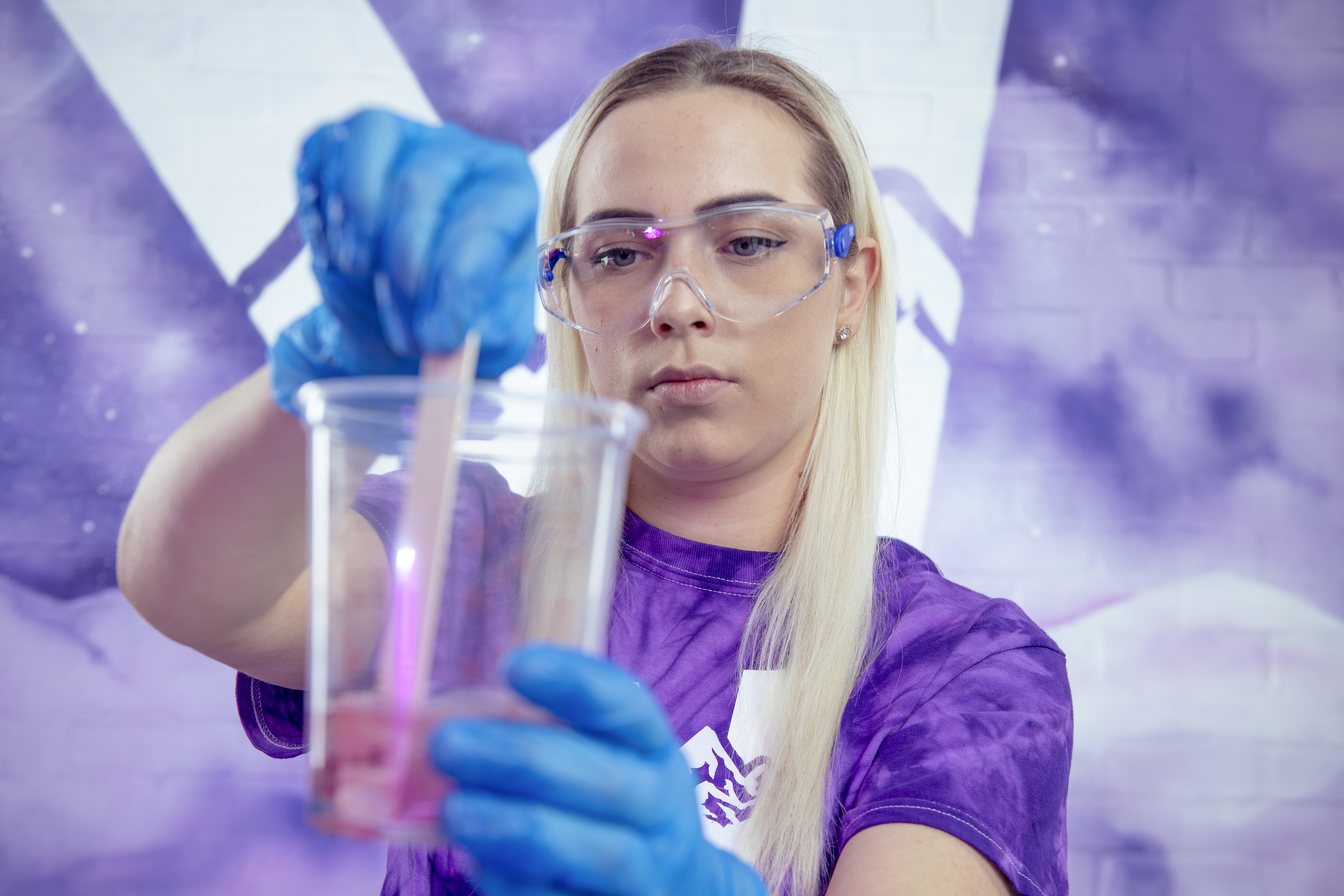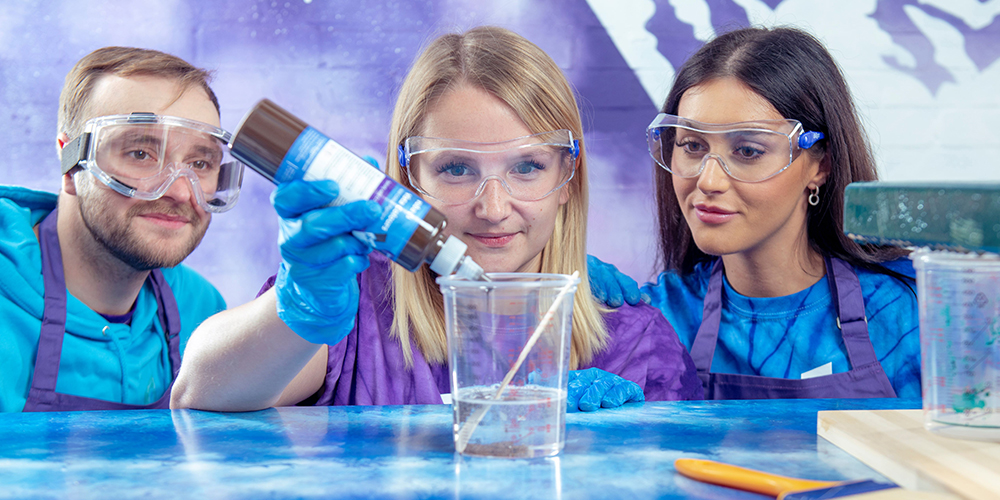How Do Epoxy Resins Cure? Let's Explain!


How Do Epoxy Art Resins Cure?
Its pretty simple right? You mix A with B and voila! You get a great piece of art resin.
Not necessarily! There is a science behind the balance of making sure Part A and Part B react together to produce the right end product is a piece of art itself.
One myth to dispel straight away – epoxy resin does not behave anything like the emulsion paints you’re used to using, where a thin layer dries quickly and thicker layers take much longer. This is because paint is air-drying. In fact – the opposite is true – thin layers of epoxy could take a long time to go off whereas thicker pours of epoxy can go off very fast – if you use the incorrect resin/hardener combination you could even end up with a flash cure – more on that later.
Vista – It's Hot Stuff

Epoxy cures through an exothermic reaction – producing heat. The more resin in a pour the higher the exotherm – and the faster the resin will cure. For example – a resin formulated for a 5mm pour poured in a cup to a depth of 25mm will soon overheat because of the exotherm, the end result would likely produce enough heat to warp/melt the cup, would be full of bubbles and yellow – this is a flash cure. Alternatively – a resin formulated for a 50mm pour poured at 5mm would take perhaps a week to cure – leaving it open to amine bloom and blush – see our other blog posts for more of an explanation on these defects.
What's in a name? Part A and Part B

To put it simply, Part A is epoxy resin, and Part B is the hardener or curing agent. When the two react together they produce a chemical reaction, taking the mixture from a liquid state, through a gel state and finish as a solid.
For our Vista products – we use a number of different combinations to allow resins to be poured at different depths. For example, Rapids has a thick, high viscosity Part A – making it ideal for coating applications. Cascade is slightly thinner – but still thick. This makes it perfect for making coasters – as the thicker resin allows the user to make additions with pigments and other additives in a controlled manner. Lake, Ocean and Mariana all share a Part A – a thinner, less viscous epoxy resin that allows for excellent bubble release and is fantastically clear.
We also have various hardeners associated with our 2 to 1 resins. Rapids and Cascade share a hardener that is specifically formulated for faster cures and thinner pours. Turbo hardener has a faster component in its ingredients – allowing for a much faster cure and a quick turnaround for those with multiple pieces to make. The hardeners for Lake, Ocean and Mariana contain a component that slows down curing, and also controls the exotherm – this allows for larger pours – particularly for Mariana as a river table epoxy – without the risk of a flash cure ruining a project. Of course our Vista One is a specially formulated combination of Part A and B – allowing it to be mixed at the one-to-one ratio.
The Gel Time
The Gel Time refers to the stage by which the mixed resin has started to move through a tacky, gel-like consistency. At this stage the resin is no longer workable – being rubber like, and able to be dented with your mixing stick (although these dents will repair themselves as epoxy is self-levelling). When the resin reaches this stage it is possible to add another layer, which will still form a chemical bond (known as a monolithic bond) – this will allow you to make deeper projects, such as encapsulations and river tables, without the final finish showing “cure lines” between the layers. If your gel time expires, you can prepare your surface for the next layer by sanding, and using isopropanol to chemically prepare the surface for the next application. Be cautious to make sure the surface is dry before the next layer is applied, and be aware that this method will show cure lines.
Final Considerations
In summary – the two factors that affect the rate of cure for epoxy resin are temperature and the formulation of the hardener. Temperature refers to the ambient temperature and the exotherm combined. Remember that with a thicker pour, more heat is retained by the exotherm, due to the smaller ratio between the mass of the pour and the surface area for temperature exchange. Conversely, a thinner pour has a much larger surface area in comparison to its mass, and therefore more exotherm heat is released. The hardener is also an important factor. As mentioned, each of our hardeners is specifically formulated to produce certain cure times at certain depths. Choosing the right Vista resin to work with for your project, and knowing how they react, is vital to achieve the desired final piece.
Don’t forget to check out our YouTube channel for more information on Vista epoxy resin.
Hopefully this has answered your questions regarding how epoxy resins cure, thanks for reading.













